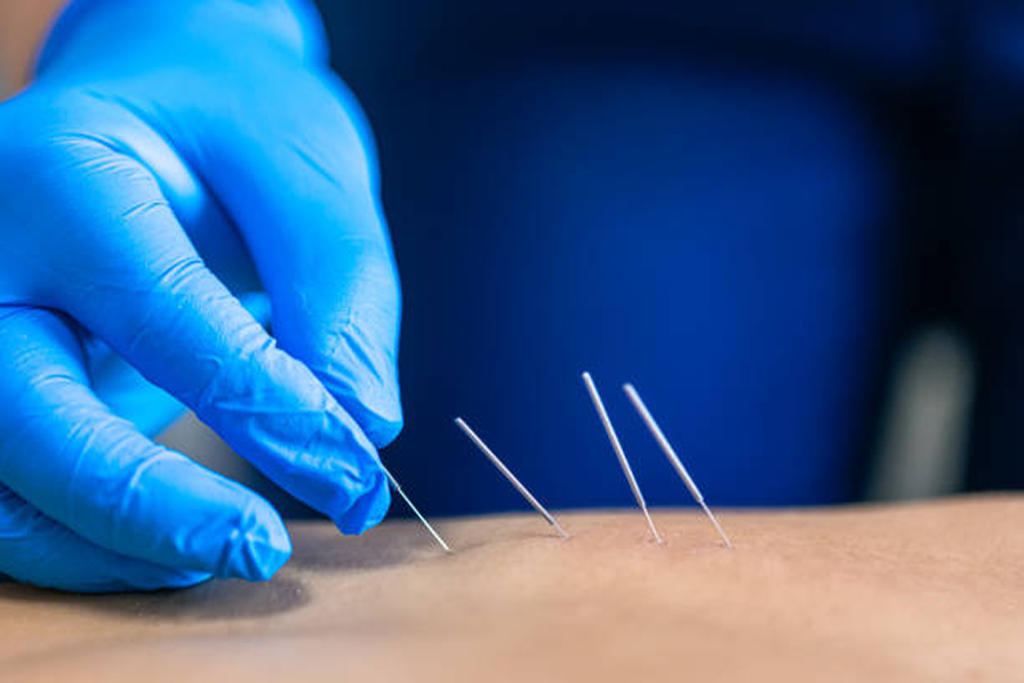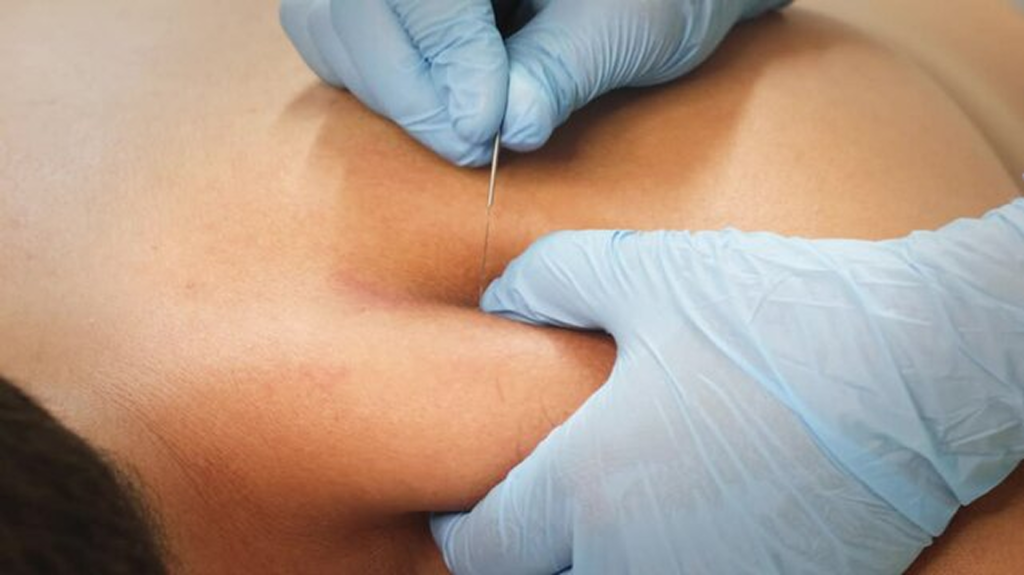- 1 Summary of the Content:
- 2 Understanding How Dry Needling Works
- 3 Safe Number of Dry Needling Treatments
- 4 How Many Dry Needling Sessions Are Typically Needed
- 5 Recommended Intervals Between Dry Needling Appointments
- 6 Signs You Might Need More or Fewer Sessions
- 7 Combining Dry Needling with Other Therapies for Relief
- 8 Safety Considerations to Keep in Mind
- 9 Final Thoughts
How Often Can You Safely Have Dry Needling for Effective Relief?
May 23, 2024
By Nick Lorem

Muscle tightness and ongoing discomfort can make daily activities more difficult. One approach used to manage this condition is dry needling, which is commonly performed as part of physical therapy.
This technique involves inserting fine needles into muscles to target a myofascial trigger point. It may help reduce tightness, ease discomfort, and support physical function.
One common question is: how often can you safely have dry needling? The answer depends on your condition, goals, and how your body responds over time.
There is no universal schedule that applies to everyone. Frequency should always be guided by a qualified health professional based on your individual situation.
If you’re considering dry needling treatment for ongoing discomfort or recovery support, it helps to understand how session timing works. This guide outlines how frequency is determined and what you might expect when aiming for pain relief.
Summary of the Content:
- Dry needling involves the use of thin needles on trigger points, which can help reduce muscle tightness, support movement, and promote natural recovery.
- The number of dry needling sessions depends on your condition, goals, and response, so individualised guidance is always important.
- General patterns suggest one or two sessions weekly at first, tapering as muscle function improves and discomfort reduces.
- Three to six dry needling sessions may be sufficient for addressing common concerns, while chronic conditions may require longer-term treatment planning and management.
- Leaving several days between sessions helps recovery and prevents irritation, supporting safer and more effective results.
- Combining dry needling with exercise, stretching, or massage may reduce pain intensity and support better function.
- Mild side effects, such as post-treatment soreness, can occur and usually settle quickly.
Understanding How Dry Needling Works
Dry needling is a therapeutic technique that involves inserting thin needles into specific points in the muscle known as trigger points. These points often develop in skeletal muscle due to overuse, stress, or reduced movement.
Trigger points can form when muscles stay tight for extended periods. This may lead to local discomfort, reduced mobility, or referred sensations in other parts of the body.
When a needle is inserted into a myofascial trigger point, it may produce a local twitch response. This is a brief, involuntary contraction in the muscle. The response may have several effects:
- It may help release built-up tension within the muscle tissue, improving comfort in the surrounding area.
- It can support the return of normal muscle function, especially when the muscle has been restricted by tightness or reduced mobility.
- It may stimulate a natural healing response, encouraging the body to send blood and nutrients to the area.
The technique may also help increase blood flow to the affected muscle, which can assist with recovery from muscle soreness or strain.
Dry needling is often included in physical therapy plans. It may be used to support people with myofascial pain syndrome, chronic pain, or local issues such as shoulder pain, hip pain, or neck pain.
Some people experience some discomfort or temporary muscle soreness after a session. This response is usually short-term and part of the normal adjustment process.
Factors That Influence Dry Needling Frequency
The appropriate number of dry needling sessions varies from person to person. It depends on several factors, including your symptoms, health history, and individual response to care.
Some of the key factors that can influence treatment frequency include:
- The severity and type of condition
People with acute pain may respond differently to dry needling treatment than those managing longer-term issues like chronic pain or ongoing muscle tension. - How your body responds to previous sessions
If your muscles respond well and show signs of improvement early on, your treatment plan may be adjusted to allow more time between sessions. - Your overall health, lifestyle, and physical activity levels
Factors such as sleep, stress, hydration, and physical activity can impact how quickly you respond and how often dry needling is recommended. - The presence of delayed or lingering symptoms
Some people experience delayed onset muscle soreness after needling. This may impact the scheduling of the next session. - The location and number of affected muscles
Sessions may be spaced differently if several trigger points are involved or if you’re addressing areas like the lower back or shoulders. - The goal of your care
Your practitioner may adjust the treatment plan depending on whether you’re aiming for short-term support, ongoing pain relief, or improved mobility. - Advice from your health professional
Your practitioner will recommend the most suitable interval based on your specific condition and recovery status. - The body’s need for recovery between sessions
The time between appointments allows the muscle tissue to respond, adapt, and potentially increase blood flow in the area.
Some people experience immediate relief, while others may require additional sessions before noticing consistent improvement. In either case, adjustments are based on how your body reacts.
Safe Number of Dry Needling Treatments
The number of dry needling sessions a person may need depends on the condition being managed, the severity of symptoms, and the body’s response to care.
Many licensed physiotherapists begin with more frequent sessions in the early phase. This allows the practitioner to monitor changes and adjust the treatment plan as needed.
General guidelines often include:
- One to two sessions per week at the start, particularly when addressing trigger points, muscle pain, or restricted range of motion.
- Gradually reducing the frequency over time as symptoms improve and muscle function returns to a more balanced state.
- Spreading sessions further apart to support ongoing progress without placing too much stress on the muscle tissue.
A tapering approach is commonly used, especially for those dealing with musculoskeletal pain, chronic muscle tension, or recurrent flare-ups.
The frequency of dry needling should always be guided by a qualified practitioner and based on your specific goals.
Some individuals may benefit from more frequent sessions initially to help relieve pain, while others may respond well to less frequent appointments.
Your progress will often guide how the dry needling treatment evolves.
How Many Dry Needling Sessions Are Typically Needed
The number of dry needling sessions required will vary depending on the individual’s needs. It depends on the condition being managed, how your body responds, and your overall goals.
Often, people may notice changes within a short series of appointments. Physiotherapists often provide guidance based on both the progress and recovery needs of their patients.
General patterns can include:
- Three to six dry needling sessions are often recommended for common concerns, particularly when aiming to alleviate muscle tension or relieve pain.
- Longer courses of dry needling treatment may be recommended for persistent issues, such as chronic pain or longstanding mobility restrictions.
- Trigger point dry needling may require additional sessions if multiple areas are affected or if the discomfort returns between appointments.
It is essential to note that the number of sessions required varies from person to person. Your therapeutic outcomes depend on your condition, your activity levels, and the personalised plan created by your practitioner.
As you make progress, the frequency of dry needling usually decreases over time. This helps maintain improvements without relying on continuous appointments.
Recommended Intervals Between Dry Needling Appointments
Spacing between dry needling appointments is important. It enables the body to recover, adapt, and maximise therapy’s potential benefits.
Qualified practitioners usually recommend intervals based on your condition, goals, and how you respond to earlier care. Appointments that are too close together may potentially worsen symptoms or cause unnecessary irritation.
General considerations include:
- A three- to seven-day interval between sessions is common, as this timeframe allows muscles time to recover from the effects of dry needling therapy.
- Some people may attend frequent sessions initially, especially when aiming to reduce discomfort or improve mobility.
- Those with chronic conditions often benefit from longer-term planning, with intervals adjusted to support gradual progress.
- Certain individuals notice changes within just a few sessions, while others may require more time before improvements become noticeable.
The ideal schedule will always vary. A tailored approach helps promote recovery while reducing the chance of overuse or unnecessary irritation.
Signs You Might Need More or Fewer Sessions
Dry needling does not follow a strict formula. The number of sessions often depends on how your body responds and whether your treatment goals are being met.
Some signs may suggest progress is being made:
- You may notice a reduction in discomfort after several dry needling appointments.
- Improved mobility or smoother movement may indicate positive outcomes.
- Better ability to complete daily activities may reflect changes in muscle function.
At times, it may be helpful to extend intervals between appointments or pause altogether. This may occur when:
- Ongoing improvements are maintained without the need for additional dry needling sessions.
- You are managing well with self-care strategies or exercises recommended alongside your care plan.
- Clinical guidelines suggest spacing sessions further apart to prevent unnecessary use.
More frequent support may be considered when:
- You are addressing chronic conditions that tend to return over time, such as recurring lower back issues.
- Conditions like plantar fasciitis or tennis elbow flare up, affecting your mobility and daily function.
- Adjusting the plan may help align with your treatment goals, particularly if improvements are slower than expected.
Feedback from your practitioner is critically important when deciding whether to increase, decrease, or pause dry needling.
Combining Dry Needling with Other Therapies for Relief
Dry needling can be integrated with other approaches to improve recovery. Options may include exercise, stretching, physiotherapy, or massage, depending on individual needs and goals.
When combined with movement-based care, muscle tightness can be reduced more effectively, which may help lower pain intensity and support improved physical function.
Combining several methods may result in fewer treatments, as different strategies support improvements rather than relying solely on needling.
An effective treatment approach considers the patient’s response and adjusts the treatment frequency accordingly based on progress. This flexibility allows for tailored care without unnecessary repetition.
The role of combining therapies is to enhance outcomes by focusing on reducing pain and supporting recovery, not by replacing the benefits of dry needling.
Safety Considerations to Keep in Mind
The question of how often you can safely have dry needling does not have a single answer. Safe care depends on your condition, response, and the professional advice provided to you. Below are key considerations:
- Individual treatment planning is essential.
There is no universal frequency for dry needling. The number of sessions should be based on your needs, goals, and how your body responds. - Your medical history matters.
A practitioner will review your relevant medical history to determine whether dry needling is suitable and to guide the most appropriate frequency of care for you. - Professional guidance is required.
Only a qualified health professional should provide dry needling. They can advise whether it aligns with your overall health plan and monitor your progress safely. - Mild side effects may occur.
Some people experience short-term muscle soreness or mild discomfort after a session. These usually settle quickly as the muscle adapts to stimulation. - Benefits vary between individuals.
While many notice potential benefits of dry needling, results vary depending on the condition, activity level, and overall health. Monitoring treatment outcomes helps guide ongoing decisions.
By keeping these points in mind, patients and practitioners can determine the safest way to include dry needling in a personalised plan.

Final Thoughts
The safe use of dry needling depends on many factors, including your condition, health background, and the guidance of a qualified professional.
There is no single rule for session frequency. Instead, treatment frequency based on your individual response helps create a safe and balanced plan.
A needling procedure may result in post-treatment soreness, which is usually mild and temporary. This is considered a normal part of the muscle’s recovery process.
With the right approach, many people experience significant relief or improvements in their ability to move and manage pain after several dry needling sessions.
Safe scheduling and flexible planning allow dry needling to support both recovery and long-term well-being.
If you are wondering how often you can safely have dry needling, the team at Impact Dry Needling Clinic can provide guidance tailored to your needs.

